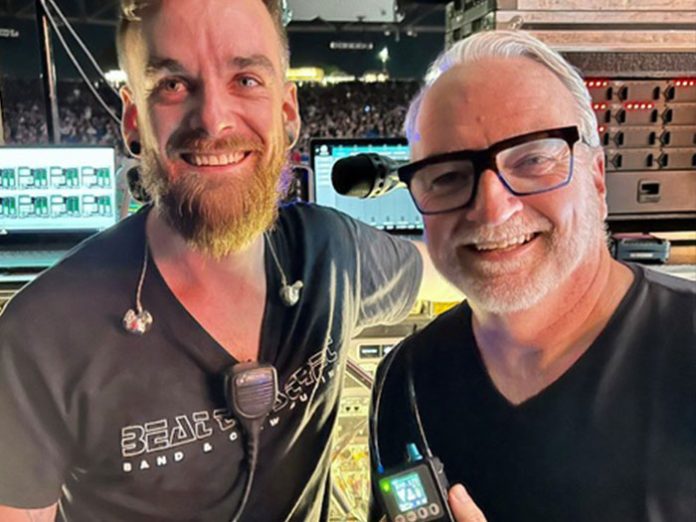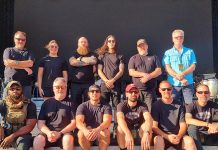Ian Beveridge and RF technician Eiran Simpson, utilise the Lectrosonics M2 Duet system, specifically M2T dual stereo transmitters, M2Ra belt-pack receivers, and an M2C active antenna combiner for Foo Fighters live shows.
“With just the one antenna and M2C coupler covering the band, we did a pre-production show at Shoreline Amphitheatre in California,” commented Ian Beveridge. “The transmitters ran on just ten milliwatts [output power]. Eiran could walk to the very back fence of the venue, and the system still worked perfectly. I prefer this because systems that rely on excessive output power tend to raise the noise floor.”
Simpson added that thanks to the full-spectrum capability offered by the digital nature of the M2 system, he has one less headache: “Because they’re wideband, the transmitters and receivers are especially suited to high-RF environments and extensive touring. They cover the full legal range of possible frequencies around the world, which is important as demand for wireless range increases while available spectrum decreases.”
Beveridge and Simpson addressed the brand’s audio quality for mixing heavy rock music: “The Lectros sound better than anything else, and I’m not just talking about frequency response,” explained Beveridge. “The big thing about mixing a band with three distorted guitars is, you need to position them spatially. If I pan two in the middle of any mix, unless they’re tonally completely different, it’s going to sound like one big guitar. The M2 system provides a wider stereo picture to work within than any other wireless I’ve ever used. Unlike other IEMs, there’s also no residual sound in the opposite earpiece when you’ve panned something hard to one side or the other. It also means that when you add a bit of reverb or harmonizer to a vocal, it sounds big. That is a godsend for a mixing engineer.”
“The Foo Fighters do at least a two-hour show every night,” added Simpson. “And when you wear in-ears for that long, after taking them out you usually need some time to re-adjust to natural sounds. But with the Lectro packs, there’s just no fatigue like that. You can take them out and immediately have a conversation. There’s just no sonic aggression there at all. I also agree with Ian about the stereo imaging. We have a busy in-ear mix so it’s nice to have such a big box to work within.”
The band seems to agree with their engineers’ assessment. “Chris Shiflett, the guitarist, specifically commented on how they sounded amazing during production rehearsals,” noted Simpson. “Even to the point of saying he would never go back to what we were using before.”






